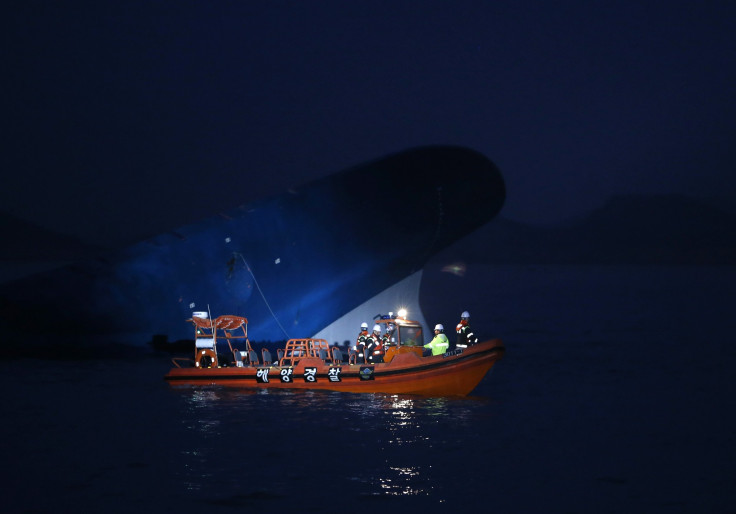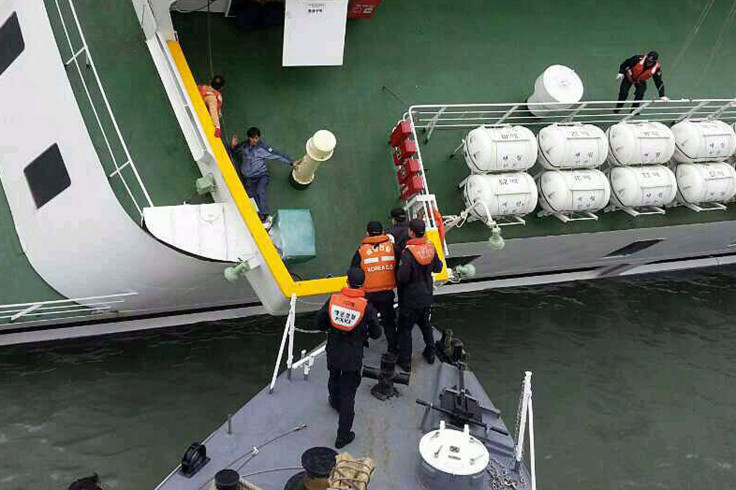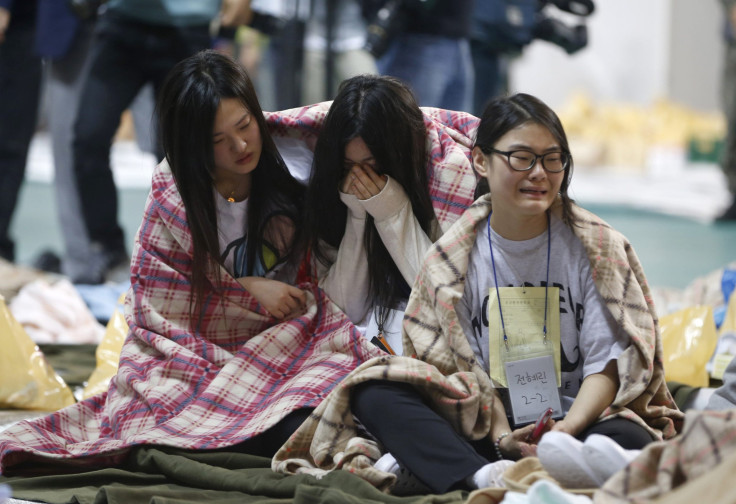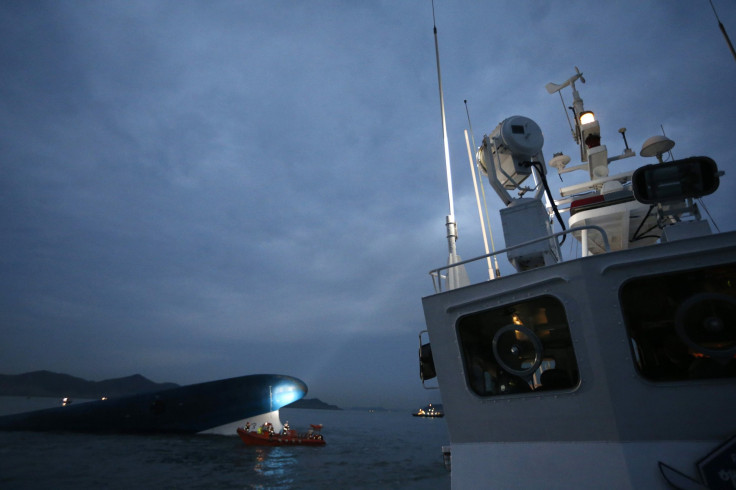Why Did South Korean Ferry Sink? Dominant Theory Emerges With Nearly 300 People Missing [PHOTOS]

Divers continue to search for survivors after a South Korean ferry that was traveling from Seoul to the resort island of Jeju sank on Wednesday. Many believe the vessel struck something in the water before capsizing.
Peter Boynton, a retired U.S. Coast Guard captain, explained to CNN that the speed at which the ferry took on water suggests it suffered outside damage.

"The speed with which this ferry began to list and then roll over on its side suggests significant damage, most likely causing major flooding that would cause a vessel of this size -- almost 500 feet long -- to quickly roll onto its side,” Boynton said. “That's very likely the result of significant damage.”
The ferry was carrying dozens of vehicles, and if an auto deck is ruptured "it's typically open to very significant flooding,” Boynton told CNN. And that could be "why the ferry in just a matter of hours began to roll onto its side so quickly."

Mary Schiavo, former inspector general for the U.S. Department of Transportation, told CNN that fog could have led to the ferry heading off course and striking an object.
"So if they hit something, that would have meant they were out of the channel, which is quite easy to do. ... What people don't see when they look at the glassy expanse is underneath, there are intricate and detailed channels maintained. If it got out of the channel, it could have hit something.
"It's also very common to have engine failures, explosions, those kinds of things on the ship, particularly in the engine room. And it would have sounded like some kind of a boom or an impact sound. But that probably alone wouldn't account for the sinking this quickly. It probably was something else that happened."

Some survivors said they heard a loud thump before the ship began to sink. Boynton said it could have been from cargo moving or "some other internal damage.” He added: "But it does sound, from initial reports, it was more likely that something was struck."
More than 300 passengers aboard the 6,325-ton Sewol, a vessel operated by Chonghaejin Marine Co., were high school students on a trip from Ansan, a city south of Seoul.
Passenger Lim Sung-Mook told CNN affiliate YTN that students were screaming and “falling over and crashing into things and bleeding.” He jumped into the water and said it was "unbearably cold."

Nine people were confirmed dead, including four students, two teachers and a member of the ferry’s crew, according to the New York Times. Fifty-five people were injured and nearly 300 out of 475 people are still unaccounted for as rescuers continue to search for survivors, the Associated Press reported.
Follow me on Twitter @mariamzzarella
© Copyright IBTimes 2025. All rights reserved.






















